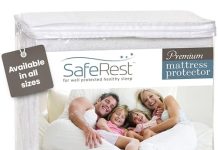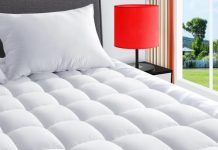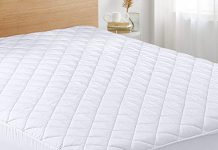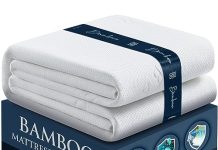Have you ever wondered what kind of mattress hospitals use to ensure patient comfort and support?
Well, you’re in luck! In this article, we will explore the commonly used mattress types in hospitals and how they contribute to the overall well-being and recovery of patients.
So, if you’re curious about the secrets behind a good night’s sleep in a medical setting, keep reading to uncover the answer to the question: What mattress do most hospitals use?
Review contents
Overview
Importance of mattresses in hospitals
When it comes to hospitals, the comfort and well-being of patients are of utmost importance. A good night’s sleep is crucial for a patient’s recovery and overall experience during their stay.
This is where mattresses play a vital role in providing the necessary support, comfort, and pressure relief. Hospitals prioritize the selection of appropriate mattresses to ensure patient comfort, promote healing, and prevent complications such as bedsores.
Impact of mattresses on patient comfort and recovery
The type of mattress used in hospitals can significantly impact a patient’s comfort and recovery. A comfortable mattress ensures proper support and alignment of the spine, reduces pressure points, and minimizes the risk of developing bedsores or pressure ulcers.
It also helps alleviate any discomfort or pain experienced by patients, promoting a restful and rejuvenating sleep. A well-rested patient is more likely to recover faster and experience improved overall well-being.
Types of Mattresses
Foam Mattresses
Foam mattresses are popular in hospitals for their exceptional comfort and pressure-relief properties. Made of viscoelastic foam, these mattresses conform to the patient’s body shape, distributing weight evenly and reducing pressure on sensitive areas. Foam mattresses provide excellent support and reduce the risk of bedsores.
Additionally, they are known for their ability to absorb motion, making them ideal for patients who are restless or have limited mobility.
Advantages of Foam Mattresses
Foam mattresses offer several advantages in a hospital setting. They provide superior comfort, pressure relief, and support, essential for chronic pain or immobility patients. Foam mattresses also have hypoallergenic properties, making them suitable for patients with allergies or sensitivities.
Furthermore, these mattresses are durable, easy to maintain, and resistant to dust mites and other allergens.
Disadvantages of Foam Mattresses
While foam mattresses have many advantages, there are a few drawbacks. Foam mattresses can be costlier than other types, which may pose budget constraints for some hospitals.
Additionally, foam mattresses have a lower breathability factor, which can lead to heat retention and discomfort for patients who tend to sleep hot.
Innerspring Mattresses
Innerspring mattresses are another widely used option in the hospital setting. These mattresses are constructed with coiled springs that provide support and a firm sleeping surface.
Innerspring mattresses offer excellent breathability, which helps regulate body temperature and prevent overheating. They are also known for their durability and long-lasting performance.
Advantages of Innerspring Mattresses
One of the main advantages of innerspring mattresses is their firmness, which provides optimal support for patients who require a sturdier sleeping surface. These mattresses are also highly breathable, promoting air circulation and preventing moisture, mold, or mildew buildup. Innerspring mattresses are also relatively affordable, making them a cost-effective choice for hospitals.
Disadvantages of Innerspring Mattresses
While innerspring mattresses are beneficial, they may not suit all patients. Some individuals, especially those with chronic pain or pressure sensitivities, may find the firmness of innerspring mattresses uncomfortable. These mattresses also tend to have less motion isolation, which can be problematic if the patient is sharing a bed or experiencing restless movements.
Air Mattresses
Hospital air mattresses are specifically designed to address pressure management and patient comfort. These mattresses have adjustable air-filled chambers that allow for personalized and precise adjustment of firmness levels. The pressure can be evenly distributed and adjusted to alleviate pressure sores and reduce the risk of skin breakdown.
Advantages of Air Mattresses
Air mattresses offer several advantages for hospital use. The adjustability of firmness levels allows healthcare professionals to tailor the mattress to each patient’s specific needs, ensuring optimal comfort and pressure relief. These mattresses provide excellent support and can be adjusted to accommodate patients with varying weight requirements. Moreover, air mattresses have a high level of breathability, preventing heat retention and improving overall sleep quality.
Disadvantages of Air Mattresses
Air mattresses may come with a few disadvantages. The cost of air mattresses can be higher than other types, posing budget constraints for hospitals. They also require electricity to power the air pump, which may limit their use in certain situations, such as power outages. Additionally, the maintenance and periodic check-up of air mattresses can be more time-consuming than other options.
Gel Mattresses
Gel mattresses combine gel-infused foam with other materials to provide enhanced comfort and support. The gel layer in these mattresses allows for better heat distribution, reducing the likelihood of overheating. Gel mattresses also conform to the body’s contours, offering pressure relief and minimizing the risk of developing pressure sores. These mattresses are particularly beneficial for patients who require additional cushioning and support.
Advantages of Gel Mattresses
Gel mattresses offer several advantages for hospital use. The gel-infused foam provides excellent pressure relief and conforms to the body’s shape, promoting proper spinal alignment and reducing the risk of bedsores. The cooling properties of the gel layer help regulate body temperature, preventing discomfort from excess heat. Gel mattresses are also known for their durability, making them a reliable long-term investment for hospitals.
Disadvantages of Gel Mattresses
While gel mattresses have many advantages, there are a few drawbacks. Gel mattresses can be comparatively more expensive than other options, which may limit their affordability for some hospitals. These mattresses also have a slower response time than foam mattresses, which can affect ease of movement for patients requiring frequent position changes. Additionally, gel mattresses may have a slightly different feel than traditional mattresses, which may take some time for patients to adjust.
Alternating Pressure Mattresses
Alternating pressure mattresses prevent pressure ulcers and promote wound healing in hospital patients. These mattresses have a series of inflatable air cells that periodically inflate and deflate, redistributing pressure and improving blood circulation. The alternating pressure helps reduce the risk of pressure sores and relieves patients who spend extended periods in bed.
Advantages of Alternating Pressure Mattresses
The main advantage of alternating pressure mattresses is their ability to prevent pressure ulcers and promote healing. The dynamic pressure redistribution achieved by these mattresses significantly reduces the risk of bedsores by managing the pressure on the patient’s body. This type of mattress is particularly beneficial for patients who are immobile or bedridden for extended periods. Alternating pressure mattresses also offer customizable settings to cater to individual patient needs.
Disadvantages of Alternating Pressure Mattresses
While alternating pressure mattresses provide crucial benefits, a few disadvantages exist. Cost can be a significant factor as these mattresses tend to be more expensive compared to other options.
Additionally, the noise generated by the air pump in these mattresses may cause discomfort for certain patients. It is essential to ensure proper maintenance and periodic checks to maintain optimal performance.
Factors Influencing Hospital Mattress Selection
Choosing the right mattress for a hospital involves considering various factors to meet patient needs, maintain infection control, manage budgets, ensure durability, and facilitate maintenance and cleaning.
Patient Needs
The primary consideration in hospital mattress selection is the specific needs of patients. Patients may benefit from different mattresses depending on the medical condition or level of care required. For example, patients with chronic pain or pressure sensitivities may require foam mattresses for optimal support and pressure relief.
Patients at risk of pressure ulcers may benefit from alternating pressure mattresses. Individual patient assessments and consultations with healthcare professionals are crucial in determining the most appropriate mattress for each patient.
Infection Control
Infection control is a critical aspect of hospital mattress selection. Hospitals must prioritize mattresses that are easy to clean, disinfect, and maintain. Hospital-acquired infections can pose significant risks to patients.
Therefore, selecting mattresses resistant to bacteria, mold, and mildew is essential. Options such as foam mattresses with high-quality, waterproof covers or mattresses designed with antimicrobial properties are commonly preferred for their infection control benefits.
Budget Constraints
Budget constraints are a reality that hospitals must navigate when selecting mattresses. Balancing quality, comfort, and affordability is critical to ensuring optimal patient care within budget limitations.
Depending on the available funds, hospitals may opt for cost-effective options such as innerspring or foam mattresses that balance price and performance well. Careful planning, evaluating long-term durability, and exploring potential financing options can help hospitals make informed decisions that meet their budgetary needs.
Durability
Durability is crucial in hospital mattress selection, as these mattresses must withstand constant use and frequent cleaning.
Hospitals require mattresses that can withstand regular sanitization processes without compromising performance or structural integrity. Additionally, durable mattresses reduce the need for frequent replacements, making them a cost-effective long-term investment for hospitals.
Maintenance and Cleaning
Easy maintenance and cleaning are essential factors in hospital mattress selection. Hospitals must ensure that mattresses can be cleaned, disinfected, and dried efficiently to maintain optimal hygiene standards.
Mattresses with removable and washable covers or those with waterproof properties simplify the cleaning process and help prevent the accumulation of dirt, stains, or odor. Hospitals need to consider the specific cleaning requirements of each mattress type and assess their maintenance feasibility.
Hospitals’ Preferred Mattress Types
Understanding hospitals’ preferences regarding mattress types provides valuable insights into the choices made by healthcare professionals. Several surveys and research studies have provided statistical data on the mattress types most commonly used in hospitals.
According to survey statistics and research findings, foam mattresses are hospitals’ most preferred mattress type. The exceptional comfort, pressure relief, and support foam mattresses provide significantly contribute to their popularity. Innerspring mattresses also rank high in hospitals’ preferences, primarily due to their durability, breathability, and cost-effectiveness.
Air and gel mattresses are also commonly used, particularly in specialized units or for patients with specific medical conditions. Alternating pressure mattresses, though widely recognized for their therapeutic benefits, tend to be less commonly used due to their higher cost and specialized application.
Conclusion
Selecting the right mattress for hospitals is crucial in ensuring patient comfort, satisfaction, and well-being. By considering factors such as patient needs, infection control, budget constraints, durability, and maintenance, healthcare professionals can make informed decisions to meet the diverse requirements of their patients.
The choice of mattress type significantly impacts patient recovery, preventing complications and enhancing the overall hospital experience. By providing comfortable and supportive mattresses, hospitals promote healing, reduce the risk of complications, and improve patient outcomes.
































